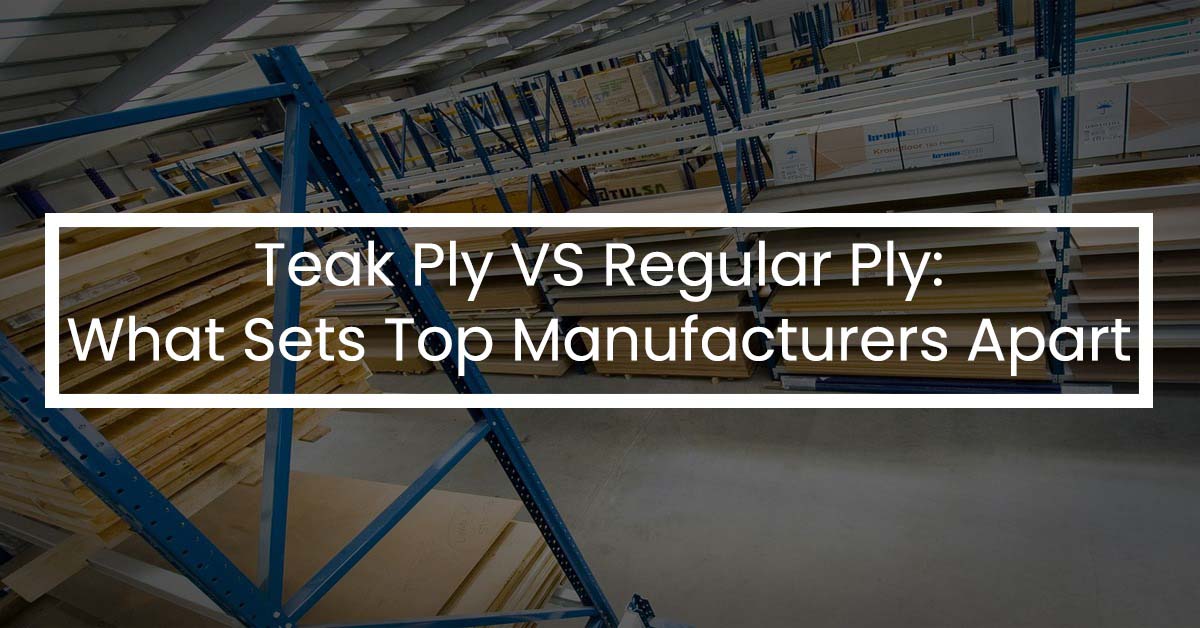
Teak Ply vs. Regular Ply: What Sets Top Manufacturers Apart?
Let's face it: unless you're an architect, carpenter, or die-hard DIY fanatic, wood talk may not pique your interest. However, if you've ever imagined a Pinterest-worthy kitchen or a living area that screams "luxury lodge meets modern zen," knowing your ply is critical. The distinctions between teak ply and normal ply are more than just superficial.
So, what is the truth about teak plywood, and why do some teak ply manufacturer charge such a high price? Let's break it down with style, sass, and just a little sawdust.
Teak Ply: Experience luxury in layers
If plywood had a VIP lounge, teak would be drinking aged whiskey with mahogany and rosewood. Teak is valued for its natural oils, golden-brown color, and remarkable resistance to water, termites, and decay.
Key advantages of teak plywood:
- 1) Water resistant (no more warping!)
- 2) Termite-resistant (those tiny wood-choppers dislike it).
- 3) Aesthetic appeal (rich, warm tones that don't require extra polishing).
- 4) Durability (This stuff is built to last)
Regular Ply: The Reliable All-Rounder
Don't be quick to dismiss regular ply. It is adaptable, inexpensive, and available in a range of qualities to suit everything from wardrobe back panels to office walls.
Key advantages of regular ply:
- 1) Budget-friendly
- 2) Suitable for indoor applications.
- 3) Available in several grades and thicknesses.
- 4) More easily sourced
So, What Sets Agni Plywood Apart?
Whether it’s teak or regular ply, here’s where Agni Plywood truly ignites its edge over the competition:
Obsession with quality
Every sheet of Agni ply is subjected to stringent quality inspections, from raw material selection to final press. This implies that you can trust Agni as far as quality and durability is concerned.
Manufacturing that is technically savvy
Agni's innovative calibrating technology and automated pressing equipment assure uniform thickness and faultless bonding.
Eco-Friendly Practices
At Agni Plywood, we are committed to sustainability. Agni is as environmentally friendly as it is to your interiors, using responsibly sourced wood and low-emission adhesives.
Design Meets Durability
Agni recognizes that plywood is more than simply a structural element; it is an extension of your space's individuality.
When You Think plywood, Think Agni
At the end of the day, the decision between teak ply and normal ply is more than just technical; it's also creative. It's all about how you see your space, how much durability you require, and how far you're ready to go to guarantee that every corner reflects quality.
